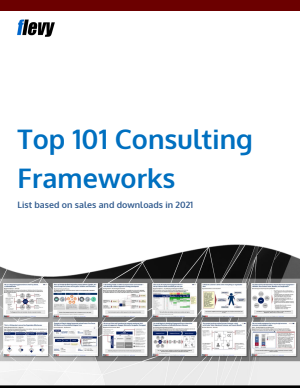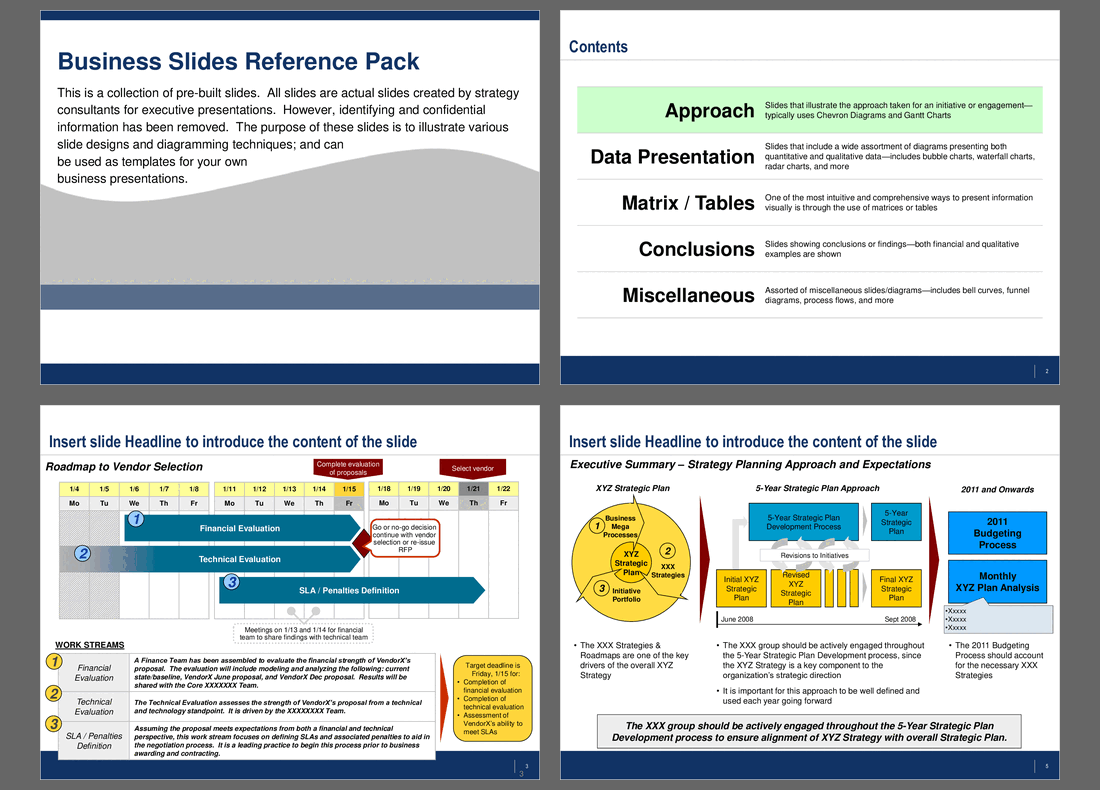







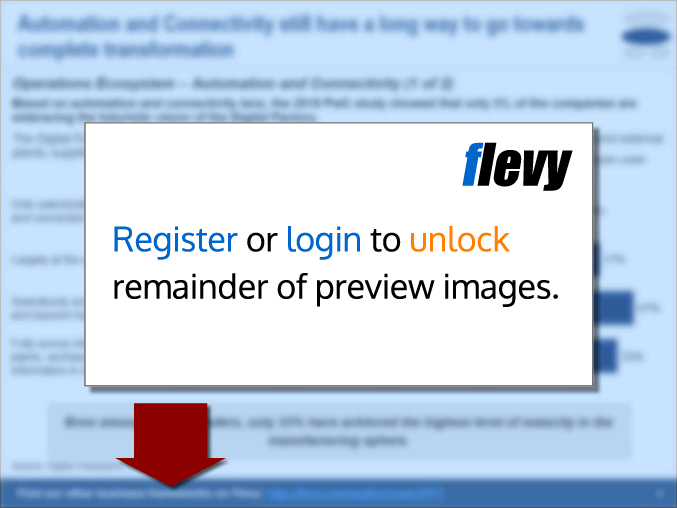








Please login here to save this document to a list.
If you don't have an account, you can register for free here.
Business Slides Reference Pack (PowerPoint PPT Slide Deck)
PowerPoint (PPT) 67 Slides
POWERPOINT DIAGRAMS COMPILATION PPT DESCRIPTION
This is a collection of pre-built PowerPoint slides. All slides are actual slides created by strategy consultants for client executive presentations. However, identifying and confidential information has been removed.
The purpose of these PPT slides is to illustrate various slide designs and diagramming techniques; and can be used as templates for your own business presentations.
The Business Slides Reference Pack offers a comprehensive toolkit for executives looking to elevate their presentation game. The slides cover a wide range of strategic and operational topics, providing a robust foundation for any business discussion. Each slide is meticulously crafted to ensure clarity and impact, making it an invaluable resource for high-stakes meetings and presentations.
The pack includes detailed process flows, such as the "Craft, Map, Measure" framework, which guides users through strategic initiative identification and evaluation. This structured approach ensures that all critical aspects are considered, from initial data analysis to final implementation. The slides also feature various fast-track scenarios, allowing for quick decision-making and efficient project execution.
In addition to process flows, the pack includes detailed timelines and milestone charts, such as those outlining subscriber growth and promotional strategies. These visual aids are designed to help executives communicate complex information succinctly and effectively. The inclusion of real-world examples and case studies adds practical value, demonstrating how these templates can be adapted to specific business needs.
The slides also delve into specialized topics like pricing models, sales process flows, and market analysis. Each section is designed to provide actionable insights and facilitate informed decision-making. Whether you're preparing for a board meeting, a client pitch, or an internal strategy session, this reference pack equips you with the tools you need to deliver compelling and persuasive presentations.
Got a question about the product? Email us at support@flevy.com or ask the author directly by using the "Ask the Author a Question" form. If you cannot view the preview above this document description, go here to view the large preview instead.
Source: Best Practices in PowerPoint Diagrams Compilation PowerPoint Slides: Business Slides Reference Pack PowerPoint (PPT) Presentation Slide Deck, LearnPPT Consulting
POWERPOINT DIAGRAMS COMPILATION PPT SLIDES
Structured Timeline for Vendor Evaluation Process

This PPT slide outlines a structured approach to vendor selection, detailing a timeline and key work streams involved in the evaluation process. The roadmap spans from January 4 to January 22, indicating a systematic progression through various stages of assessment.
The first work stream is the Financial Evaluation, which involves a dedicated finance team tasked with analyzing the financial robustness of VendorX's proposals. This includes a review of the current state, alongside specific proposals from VendorX dated June and December. The results of this evaluation are intended to be shared with a core team, ensuring alignment and informed decision-making.
Next is the Technical Evaluation, which focuses on the technical merits of VendorX's offerings. This assessment is driven by a designated team and aims to ensure that the proposal meets the necessary technical standards and expectations.
The timeline highlights critical decision points, particularly around January 15, when a go/no-go decision will be made regarding whether to proceed with vendor selection or reissue the request for proposals (RFP). This decision is pivotal, as it will determine the next steps in the vendor selection process.
The slide also notes the importance of defining service level agreements (SLAs) and penalties, which are crucial for managing vendor performance and expectations. Meetings scheduled for January 13 and 14 are designated for sharing findings between the financial and technical teams, indicating a collaborative approach to ensure all aspects of the proposals are thoroughly evaluated.
Overall, this slide serves as a clear guide for stakeholders involved in vendor selection, emphasizing the importance of both financial and technical evaluations in making informed decisions.
Strategic Marketing Considerations and Financial Metrics
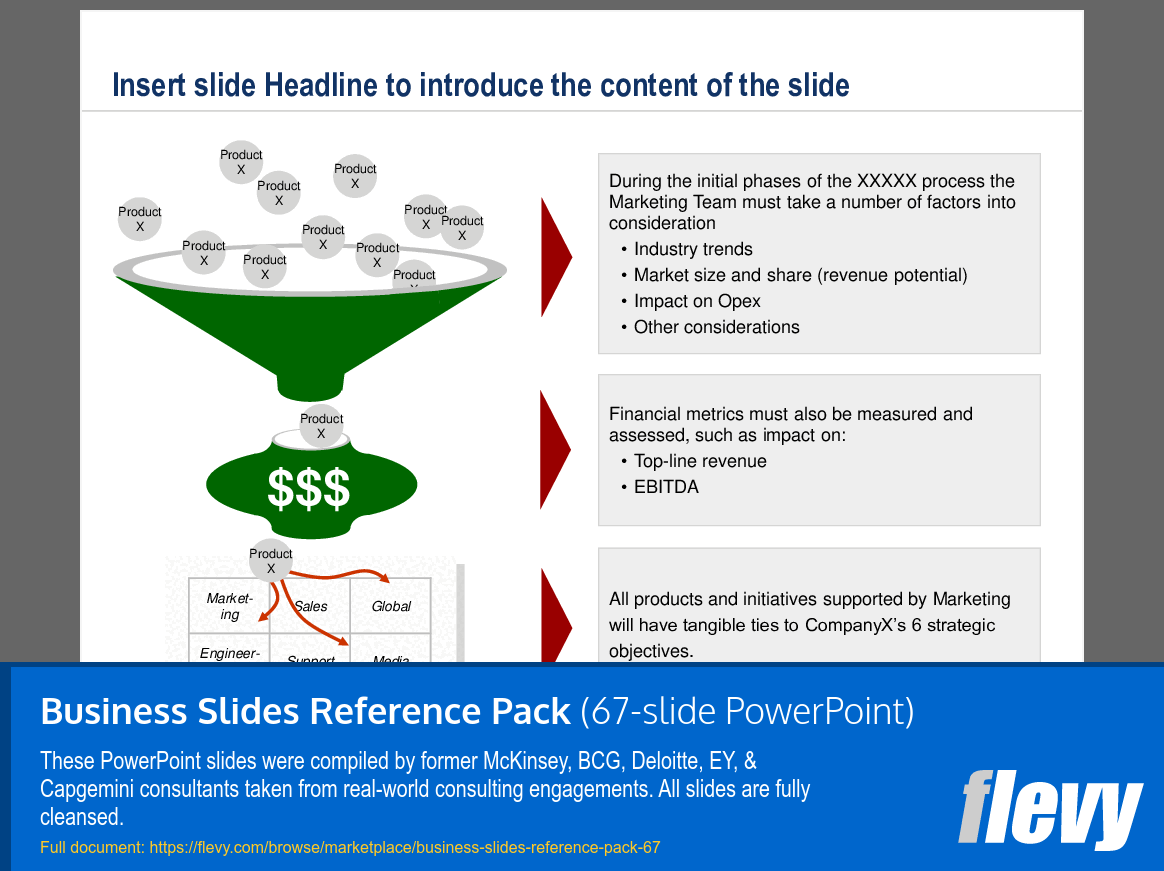
This PPT slide outlines critical considerations for the Marketing Team during the early stages of a specified process. It emphasizes the importance of analyzing various factors that influence decision-making. Key areas of focus include industry trends, market size and share, operational expenditure implications, and additional relevant considerations. This structured approach ensures that the team is well-informed and aligned with broader organizational goals.
Financial metrics are highlighted as essential components of the assessment. The slide specifically mentions the need to evaluate top-line revenue and EBITDA, which are crucial for understanding the financial health and potential profitability of initiatives. This financial scrutiny supports strategic planning and resource allocation.
The visual representation of a funnel suggests a systematic filtering of products or initiatives, indicating that not all options will move forward. The funnel narrows down to a dollar sign, reinforcing the idea that financial outcomes are a primary concern.
Furthermore, the slide indicates that all products and initiatives backed by the Marketing Team must align with CompanyX’s 6 strategic objectives. This alignment is vital for ensuring that marketing efforts contribute to the overall mission and vision of the organization.
Overall, the slide serves as a guide for the Marketing Team to navigate the complexities of market analysis and financial assessment effectively. It underscores the necessity of a comprehensive approach that integrates both qualitative and quantitative factors, ultimately driving informed decision-making and strategic alignment.
Strategic Pricing across the Product Lifecycle
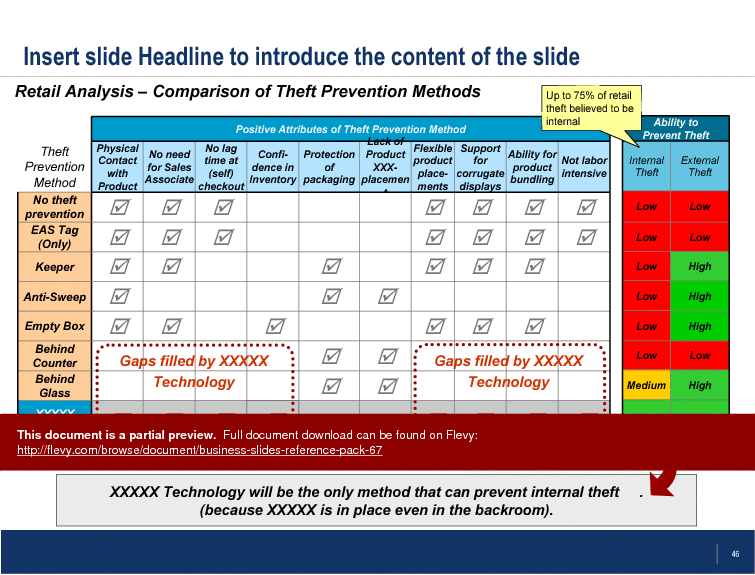
This PPT slide presents a framework for understanding pricing strategies in relation to the product lifecycle, highlighting key customer segments and their characteristics. It divides the market into distinct phases: Early Adopters, Chasm, Early Majority, Late Majority, and Laggards.
Early Adopters are characterized as a niche group that is less sensitive to price, often driven by specific needs within specialized markets (e.g., COXX and MetXX). They are willing to invest early, but represent a small segment of the overall market. The slide emphasizes the critical transition across the Chasm, where a company must effectively shift its pricing strategy to appeal to a broader audience, capturing the Early Majority, which constitutes a larger portion of the market.
The Early Majority consists of pragmatic customers who prioritize safety and efficiency. They are more price-sensitive and typically wait until a product has proven its value before making a purchase. This group is crucial for achieving significant sales volume.
As the product matures, the Late Majority enters, characterized by conservative buying behavior and a tendency to invest only when products are well-established. They are also influenced by competitive offerings, often opting for “me-too” products. Finally, Laggards are the last to adopt, often resistant to change and driven by necessity rather than desire.
The slide underscores the importance of developing a pricing strategy that not only captures early adopters, but also effectively transitions into the majority market. This strategic approach is vital for sustaining revenue growth and maintaining a premium position in the market.
Benefits Overview of ProductX: Revenue and Cost Implications
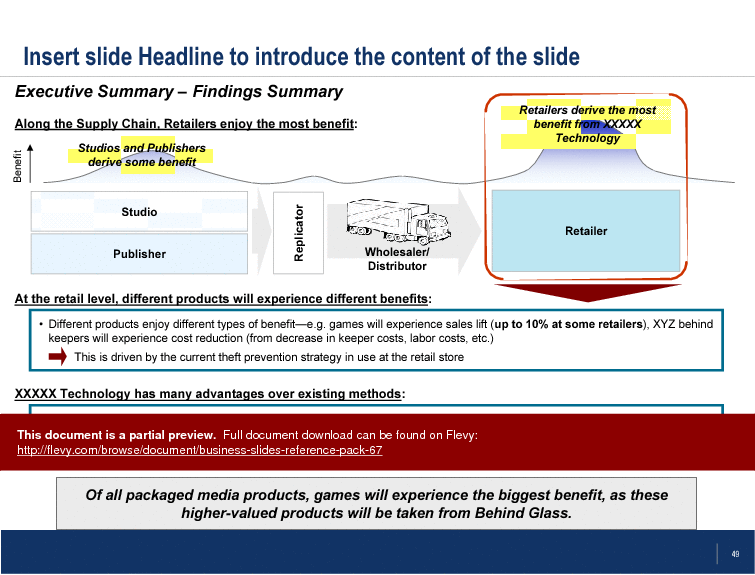
This PPT slide presents a structured overview of the benefits associated with ProductX, categorized into 3 primary areas: Revenue Enhancement, Cost Savings, and Future Cost. Each category outlines specific advantages linked to the implementation of noninvasive testing methods.
In the Revenue Enhancement section, the slide highlights the potential for additional revenue through CPT reimbursement from noninvasive tests. It emphasizes that these tests not only take less time, but also improve patient throughput in emergency departments. The mention of expedited diagnosis suggests a direct correlation between the use of noninvasive testing and increased operational efficiency, particularly in inpatient settings. The text indicates that this approach can help recoup lost revenue opportunities by reducing the number of patients who might otherwise face delays in diagnosis.
The Cost Savings section focuses on the financial benefits derived from reducing invasive tests, which in turn decreases laboratory costs. It points out the importance of avoiding unnecessary treatments and tests that may arise from delayed diagnoses. This area also mentions the reduction in spending related to specific sensor technologies, suggesting a strategic shift towards more efficient and cost-effective solutions.
Future Cost considerations highlight the risk mitigation associated with avoiding invasive procedures. This aspect underscores the long-term financial prudence of adopting noninvasive testing, which can lead to significant savings by preventing complications and associated costs.
Overall, the slide effectively communicates the multifaceted benefits of ProductX, making a compelling case for its adoption in healthcare settings. The structured approach allows for easy comprehension of how these benefits interlink to support both immediate and long-term financial goals.
Phased Strategy for Launching New Services

This PPT slide outlines a phased approach to launching a new service, segmented into 3 key areas: Online Only, Closed STB Platform, and Open XXXX Offering. Each segment is aligned with different timeframes—immediate, short to medium term, and long term—indicating a strategic roadmap for service deployment.
The "Online Only" section emphasizes immediate access for users to stream or download videos from content producers' websites. This phase encourages players to analyze viewer habits, suggesting a focus on data collection and user engagement. It sets the groundwork for understanding market preferences before broader service offerings are introduced.
Moving to the "Closed STB Platform," the focus shifts to a more structured service offering. Here, users can access both free and paid on-demand content, alongside linear programming. The mention of proprietary set-top boxes (STBs) certified by content producers indicates a controlled environment where content delivery is managed closely. However, the lack of established standards restricts user choice regarding STB procurement, which could limit user flexibility and satisfaction.
Finally, the "Open XXXX Offering" represents a long-term vision where established standards allow users greater freedom in choosing their consumer premises equipment (CPE). This phase anticipates a more open ecosystem where users can utilize various devices, including Internet-enabled STBs and gaming consoles, enhancing accessibility and user experience.
Overall, this slide presents a clear trajectory for service development, balancing immediate user engagement with long-term flexibility and choice. It highlights the importance of understanding user behavior early on while preparing for a more open and competitive environment in the future.
Project Timeline for CDMA and WiMAX Deployment

This PPT slide outlines a structured timeline for a project involving multiple phases, specifically focusing on the deployment and management of CDMA and WiMAX technologies. It is divided into 3 main modules: Assessment, Design, and Build, with each module containing specific tasks and milestones.
In the Assessment phase, which begins in February 2008, the focus is on deploying the team and identifying gaps in strategy, operations, and infrastructure. This foundational work is critical for ensuring that subsequent phases are built on a solid understanding of the current state.
The Design module follows, where the emphasis shifts to refining the scope and improvement plan. This stage includes detailed work on channels, operations, and partner/package selection, which are essential for effective implementation.
The Build module is where the timeline becomes particularly active, starting in May 2008. Key activities include a series of launches: a Friendly User Test (FUT) in May, followed by a soft launch in June, and a hard launch in July. Each of these phases is designed to progressively test and refine the service before full-scale deployment. The timeline indicates that the soft launch will occur with restrictions on subscriber growth and communication, allowing for adjustments based on initial feedback.
The slide also highlights the importance of user testing throughout the process, with specific dates allocated for these tests. This iterative approach ensures that any issues can be addressed before the hard launch, which marks the beginning of full customer acquisition campaigns.
Overall, the slide presents a clear roadmap for the project, emphasizing the importance of structured phases and testing to ensure successful implementation.
Retail Analysis: Sales Lift and Cost Reduction Insights

This PPT slide presents a retail analysis focused on potential benefits derived from various product types and their associated theft prevention strategies. It employs a two-dimensional matrix to illustrate expected sales lift against expected cost reduction for different product categories. The vertical axis indicates the anticipated sales increase per affected unit, while the horizontal axis reflects the expected cost savings per unit.
Products are categorized into segments based on their demand profiles, with color coding to differentiate between new or catalog items and their theft prevention methods. Notably, products labeled as "Hi-Demand Behind Glass" and "Catalog Keeper" are positioned in the high sales lift quadrant, suggesting they are likely to yield significant sales increases when paired with effective theft prevention measures. Conversely, items classified as "Low-Demand Keeper" are situated in the lower sales lift area, indicating a less favorable outcome.
The slide also emphasizes the importance of understanding the demographic that experiences the worst consumer experience, as this group is projected to see the highest sales lift. Additionally, it mentions the need for further research into theft profiles to determine the effectiveness of various strategies for different product types. The note at the bottom clarifies that while the relative positions of the products are not to scale, they effectively illustrate the relationships between product types and theft prevention strategies.
Overall, this analysis provides valuable insights for decision-makers considering the implementation of theft prevention measures in retail settings. The structured layout allows for quick comprehension of how different strategies might impact sales and cost efficiency.
Strategic Management Roadmap Development Framework

This PPT slide outlines a structured approach to developing a management strategy and roadmap for an organization, focusing on key objectives and a timeline. The primary goals include assessing the alignment of the organization's capabilities with its stated business needs, coordinating management initiatives across the organization, and formulating a two-year strategic roadmap for specific areas such as rights management.
The timeline spans several weeks, indicating a phased approach. It begins with the development of a portfolio of initiatives, followed by an evaluation and prioritization phase, and concludes with the creation of a detailed roadmap. This methodical progression suggests a comprehensive analysis is essential for identifying opportunities and gaps between the current situation and future vision.
The slide features a gap analysis section, which is crucial for understanding the discrepancies between where the organization currently stands and where it aims to be. This analysis will help in identifying potential initiatives that can bridge these gaps. The preliminary portfolio of initiatives includes various categories such as quick wins, existing initiatives, and new initiatives, emphasizing a balanced approach to both immediate and long-term goals.
The prioritization of initiatives is highlighted as a key step, where each initiative will be evaluated for its value and feasibility. This ensures that resources are allocated effectively to initiatives that align with strategic objectives. The final section, labeled "Future-State Roadmap," suggests that the output will include a clear roadmap and transformation timeline, providing stakeholders with a visual guide to the planned changes and expected outcomes. This slide serves as a foundational tool for executives looking to align their strategic vision with actionable initiatives.
Evaluating Retail Theft Prevention Strategies
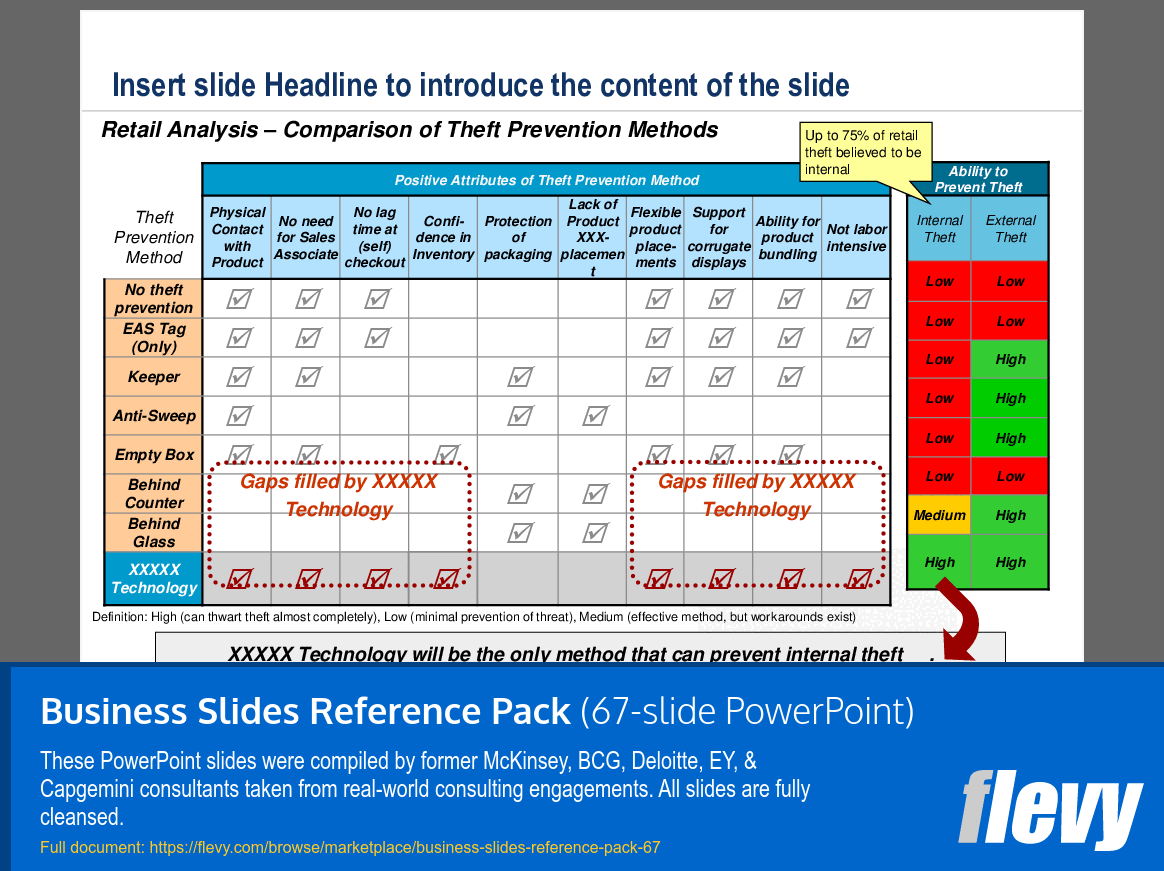
This PPT slide presents a comparative analysis of various theft prevention methods used in retail settings. It categorizes each method based on several positive attributes, which are critical for evaluating their effectiveness in minimizing theft. The methods listed include "No theft prevention," "EAS Tag (Only)," "Keeper," "Anti-Sweep," "Empty Box," "Behind Counter," and "Behind Glass."
Each method is assessed against attributes such as the need for physical contact with the product, the requirement for sales associates, lag time at self-checkout, confidence in inventory, and the protection of packaging. The table indicates which methods fulfill these attributes, allowing for a straightforward visual comparison.
A significant insight is that "XXXXX Technology" is highlighted as the only method capable of preventing internal theft effectively. This suggests a gap in the current methods, particularly in addressing internal theft, which is noted to be a major concern, with up to 75% of retail theft believed to be internal. The slide emphasizes that while many methods are effective against external theft, they fall short in preventing internal incidents.
The color-coded ability to prevent theft section further illustrates the effectiveness of each method against internal and external threats. This visual cue can help decision-makers quickly identify which methods may require further consideration or investment. Overall, the slide serves as a valuable resource for retailers looking to enhance their theft prevention strategies by clearly outlining the strengths and weaknesses of each approach.
Strategic Planning Framework and Engagement Overview

This PPT slide presents an executive summary focused on the strategic planning approach and expectations for the XYZ organization. It outlines a structured framework for developing a 5-Year Strategic Plan, emphasizing the importance of the XXX Strategies and Roadmaps as essential components driving the overall XYZ Strategy.
At the center, a circular diagram illustrates the relationship between Business Mega Processes, the XYZ Strategic Plan, and the Initiative Portfolio. This visual representation suggests an integrated approach where each element plays a crucial role in shaping the strategic direction.
To the right, a timeline details the 5-Year Strategic Plan Development Process, indicating key phases from the Initial XYZ Strategic Plan in June 2008 to the Final XYZ Strategic Plan in September 2008. The mention of "Revisions to Initiatives" implies an iterative process, highlighting the need for flexibility and responsiveness to changing circumstances.
The text emphasizes active engagement from the XXX group throughout the development process. This involvement is critical as it ensures alignment with the organization’s strategic direction. The slide also notes the necessity of defining this approach clearly for ongoing use, indicating a commitment to continuous improvement.
Looking ahead, the slide outlines expectations for the 2011 Budgeting Process and Monthly XYZ Plan Analysis. It stresses that these processes must incorporate the necessary XXX Strategies, ensuring that financial planning aligns with strategic objectives. This comprehensive view not only prepares stakeholders for upcoming initiatives, but also reinforces the importance of strategic alignment in budgeting and planning.
Structured Approach to Wireless Analysis Scenarios

This PPT slide outlines a structured approach to analyzing wireless information for CompanyX, presenting 3 distinct scenarios for analysis. The timeline indicates a progression from current data analysis to validation workshops and ultimately to requirements analysis or RFP development.
The "Current Data Analysis" phase emphasizes the importance of gathering and understanding existing wireless data that CompanyX has collected. This foundational step is crucial as it informs whether a Request for Information (RFI) is necessary. The slide highlights the significance of leveraging internal knowledge, suggesting that insights from the wireless team will be pivotal in aligning strategies and understanding the tactical plan for sourcing wireless solutions.
Following this, a one-day "Validation Workshop" is proposed. This workshop aims to consolidate the knowledge from various stakeholders within CompanyX, ensuring alignment and clarity on the objectives and requirements for the wireless sourcing strategy.
The scenarios presented—Scenario A (Initial Analysis), Scenario B (Partial Analysis), and Scenario C (Complete Analysis)—differ in their depth of analysis and outcomes. Each scenario lists key components such as devices, features, plans, coverage, and quality of service, categorizing them as complete or partial based on the speed of responses from carriers. This structured approach allows stakeholders to quickly assess the level of analysis achieved and the implications for decision-making.
Overall, this slide serves as a roadmap for CompanyX to navigate its wireless sourcing strategy effectively, providing clarity on the steps involved and the expected outcomes at each stage.
Market Penetration and Subscriber Growth Projections
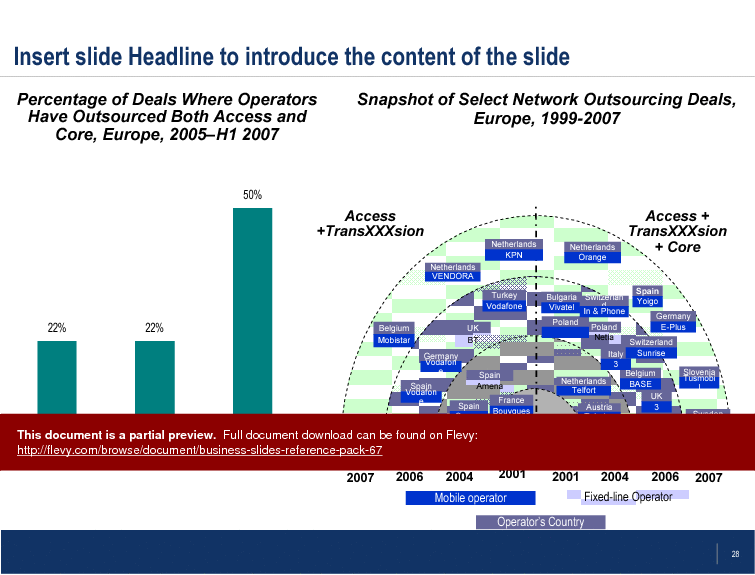
This PPT slide presents a detailed analysis of the potential market for a specific service in the UK, focusing on household penetration and subscriber growth over a five-year period. It begins with a funnel graphic illustrating the initial uptake, starting from a total of 26 million households in 2008. The slide narrows down to 13.5 million households that may show interest, followed by 6.3 million that are more likely to engage, ultimately leading to an estimated 230,000 households subscribing by the end of the first year.
The right side of the slide features a bar graph that tracks subscriber growth from Year 1 to Year 5. It indicates a steady increase in subscribers, starting from 234 in Year 1 and projecting to 1,538 by Year 5. The growth rate is illustrated as a percentage of total TV households, with penetration reaching 6% by Year 5.
Key assumptions underpinning these projections include an average annual subscriber growth of 60%, driven by the resolution of delivery issues and the availability of on-demand premium content at lower costs. The slide notes that the Year 5 penetration estimate is slightly conservative compared to analyst predictions, suggesting a cautious yet optimistic outlook.
Overall, this slide serves as a strategic tool for understanding market dynamics and subscriber potential, providing insights into both initial uptake and long-term growth. It can guide decision-making for stakeholders considering entry or expansion in this market.
Break-Even Analysis for XXXX Technology Implementation
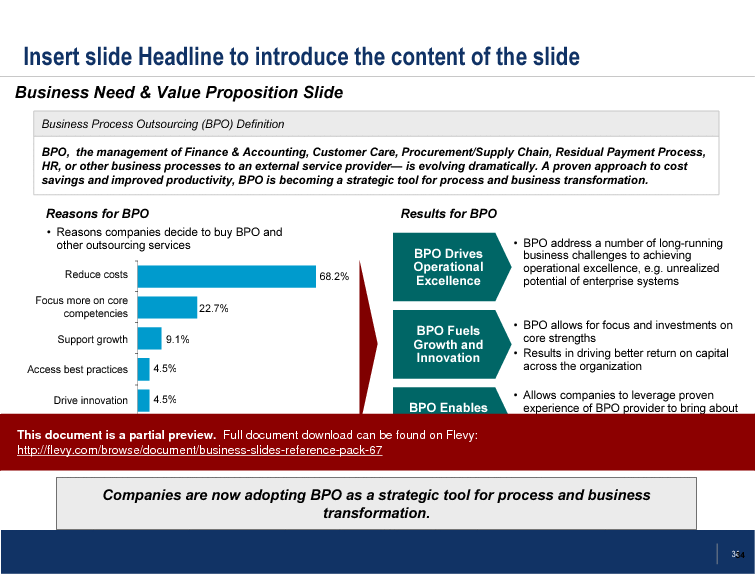
This PPT slide titled "High Level Break-Even Analysis" provides a visual representation of the break-even point for a specific technology, referred to as "XXXXXX Technology." It features a graph where the x-axis represents the unit break-even price, while the y-axis indicates total retail sales in billions of dollars. The chart is designed to help stakeholders understand the relationship between unit costs and total sales, particularly in the context of retail theft costs.
Key elements include a diagonal line that illustrates the break-even unit cost, which is defined as the incremental variable cost necessary to integrate the technology into products. The yellow band on the graph signifies the break-even range, where the intersection of total sales and unit costs occurs. Specific data points are highlighted, such as total retail sales for "XXXXXs" at $21.6 billion and for "Games" at $14.4 billion, providing a comparative framework for evaluating financial performance.
The instructions section outlines a step-by-step approach to determine the break-even point. It emphasizes calculating total retail sales, annual costs associated with retail theft, and locating the intersection point on the graph. The formula provided serves as a practical tool for executives to assess the financial viability of adopting the technology.
The details section notes that this analysis can extend beyond retail, applying to various participants in the supply chain. It also clarifies that the chart primarily focuses on one aspect of implementing the technology, specifically the costs related to retail theft. This slide is a valuable resource for decision-makers evaluating the financial implications of new technology investments.
Impact of Unlimited National Calls on Revenue Growth
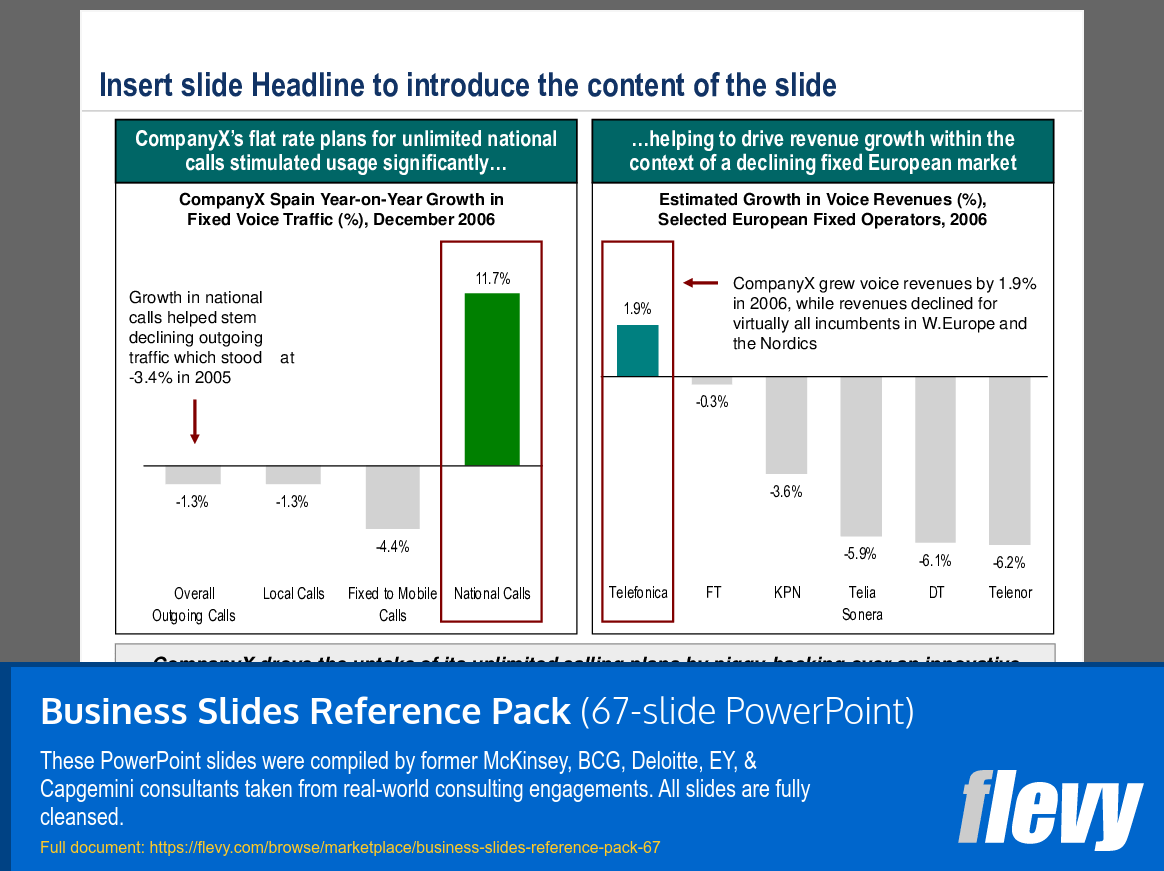
This PPT slide presents a compelling analysis of CompanyX's performance in the fixed voice traffic market for December 2006, highlighting the impact of its flat rate plans for unlimited national calls. The left side of the slide details year-on-year growth percentages in various categories of outgoing calls, indicating a significant 11.7% growth in national calls. This growth is particularly notable as it contrasts sharply with the declining trends observed in other call categories, such as local calls and fixed to mobile calls, which experienced declines of -1.3% and -4.4%, respectively. The narrative suggests that the introduction of unlimited national calling plans effectively reversed the downward trajectory of outgoing traffic, which had previously been at -3.4% in 2005.
On the right side, the slide provides an overview of estimated growth in voice revenues among selected European fixed operators. CompanyX's growth in voice revenues stands at 1.9%, a rare achievement in a market where most competitors faced revenue declines. The slide lists several operators, including Telefónica and FT, showcasing their negative growth percentages, which further emphasizes CompanyX's relative success in this challenging environment.
The overall message is clear: CompanyX's strategic move to offer unlimited national calls not only stimulated usage, but also contributed positively to revenue growth, distinguishing it from competitors struggling in a declining market. This analysis serves as a strong case for the effectiveness of innovative pricing strategies in driving customer engagement and financial performance.
ABOUT THE AUTHOR
We are a team of management consultants trained by top tier global consulting firms (including McKinsey, BCG, Deloitte, EY, Capgemini) with a collective experience of several decades. We specialize in business frameworks based on real-life consulting engagements.
We have served 100s of clients that range from Fortune 500 companies to tech startups to
... [read more]
$1B+ private companies.
Utilize our consulting frameworks to apply structured thinking & analysis to address your business challenges, uncover strategic insights, and implement workable solutions. Our PowerPoint presentations follow traditional consulting slide design formats, starting with a clear slide headline. Easily customize and repurpose our slides for your own business presentations.
Beyond business frameworks & methodologies, we also offer PowerPoint templates and other business templates. Our templates are professionally designed and have been used in thousands of deliverables & work products across hundreds of clients.
Ask the Author a Question
You must be logged in to contact the author.
|
|
"If you are looking for great resources to save time with your business presentations, Flevy is truly a value-added resource. Flevy has done all the work for you and we will continue to utilize Flevy as a source to extract up-to-date information and data for our virtual and onsite presentations!"
– Debbi Saffo, President at The NiKhar Group
|
|
|
"I have found Flevy to be an amazing resource and library of useful presentations for lean sigma, change management and so many other topics. This has reduced the time I need to spend on preparing for my performance consultation. The library is easily accessible and updates are regularly provided. A wealth of great information."
– Cynthia Howard RN, PhD, Executive Coach at Ei Leadership
|
|
|
"Last Sunday morning, I was diligently working on an important presentation for a client and found myself in need of additional content and suitable templates for various types of graphics. Flevy.com proved to be a treasure trove for both content and design at a reasonable price, considering the time I ... [read more] saved. I encountered a download issue during the ordering process. However, a quick email to Flevy's support team, even on a Sunday (!!!), resulted in assistance within less than an hour, allowing me to download the content I needed. Fantastic job, Flevy! I give 5 stars for both content/price and customer service. Thank you! "
– M. E., Chief Commercial Officer, International Logistics Service Provider
|
|
|
"Flevy is now a part of my business routine. I visit Flevy at least 3 times each month.
Flevy has become my preferred learning source, because what it provides is practical, current, and useful in this era where the business world is being rewritten. In today's environment where there are so ... [read more] many challenges and there is the need to make the right decisions in a short time, with so much scattered information, we are fortunate to have Flevy. Flevy investigates, selects, and puts at our disposal the best of the best to help us be successful in our work. "
– Omar Hernán Montes Parra, CEO at Quantum SFE
|
|
|
"As an Independent Management Consultant, I find Flevy to add great value as a source of best practices, templates and information on new trends. Flevy has matured and the quality and quantity of the library is excellent. Lastly the price charged is reasonable, creating a win-win value for ... [read more] the customer, Flevy and the various authors. This is truly a service that benefits the consulting industry and associated clients. Thanks for providing this service. "
– Jim Schoen, Principal at FRC Group
|
|
|
"As a young consulting firm, requests for input from clients vary and it's sometimes impossible to provide expert solutions across a broad spectrum of requirements. That was before I discovered Flevy.com.
Through subscription to this invaluable site of a plethora of topics that are key and crucial to consulting, I ... [read more] have been able to exceed expectations and deliver quality advice and solutions to my clients. The quality and expertise of the authors are exemplary and gives me great confidence to use as part of my service offerings.
"
I highly recommend this company for any consultant wanting to apply international best practice standards in their service offerings. – Nishi Singh, Strategist and MD at NSP Consultants
|
|
|
"The wide selection of frameworks is very useful to me as an independent consultant. In fact, it rivals what I had at my disposal at Big 4 Consulting firms in terms of efficacy and organization."
– Julia T., Consulting Firm Owner (Former Manager at Deloitte and Capgemini)
|
|
|
"My FlevyPro subscription provides me with the most popular frameworks and decks in demand in today’s market. They not only augment my existing consulting and coaching offerings and delivery, but also keep me abreast of the latest trends, inspire new products and service offerings for my practice, and educate me ... [read more] in a fraction of the time and money of other solutions. I strongly recommend FlevyPro to any consultant serious about success. "
– Bill Branson, Founder at Strategic Business Architects
|
